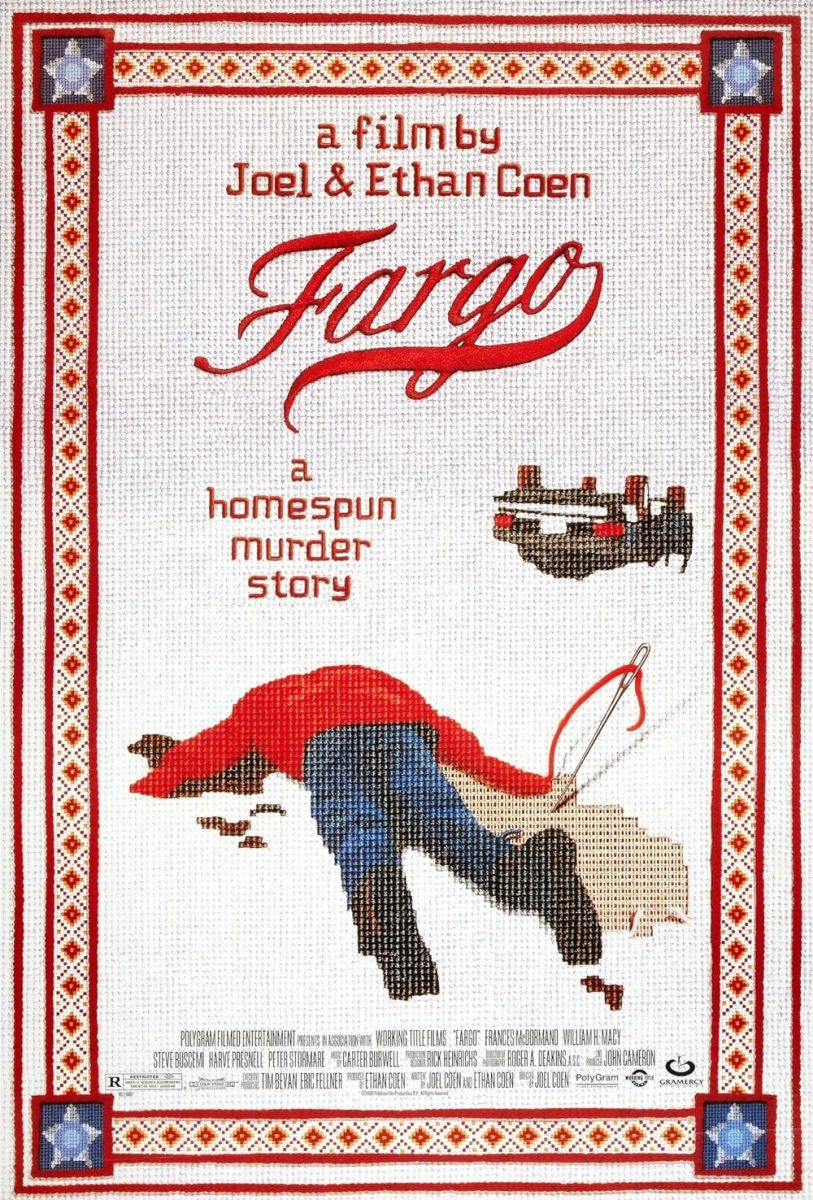Almost there! We’re so close to the final film on my top five favorite movies list. Before we get to number one, though, we must talk about number two, which is Joel Coen’s 1996 laugh-out-loud, tense drama-comedy “Fargo.”
The film stars Frances McDormand as pregnant Brainerd police chief Marge Gunderson, William H. Macy as car salesman Jerry Lundegaard and Steve Buscemi and Peter Storemare as criminals Carl and Gaear, respectively.
Taking place in Fargo, North Dakota and Brainerd, Minnesota, the film follows Jerry, severely in debt, who hires Carl and Gaear to kidnap his wife. After events go awry, Marge begins to investigate.
“Fargo” consists of some of the finest acting I have ever seen on screen, with the real standout being McDormand, who won the Oscar for Best Actress for this role at the 69th Academy Awards. McDormand brings such a genuine kindness and soul to Marge not seen in many characters in film. At the same time, it is clear that Marge is very smart and takes everything happening around her into consideration. Macy, Buscemi and Storemare are also all fantastic in their respective roles. One performance that deserves a special shoutout is Steve Park as Mike Yanagita, who does so much with so little. He also shows up in arguably the most important scene in the entire film.
While the pair is known for many great films including “The Big Lebowski” (1998) and “No Country for Old Men” (2007), “Fargo” is one of the Coen brothers’ earliest hits. Only Joel Coen was credited as director, but both brothers are credited as writers on the film. The two manage to incorporate all the distinct and quirky humor that is present in their later screenplays, while also blending it perfectly with the dark and sometimes graphic violence portrayed in the movie. Many of the scenes are shot subtly. By this, I mean the action taking place on screen is done with very few cuts and shot with wider angles, allowing the viewer to take in the gorgeous imagery and clearly see what is happening.
All aspects of filmmaking contribute to the greatness that is “Fargo.” Legendary cinematographer Roger Deakins, known for his work on “1917” (2019) and “Blade Runner: 2049” (2017), composes beautiful shots, using the often barren landscapes as backdrops. The music composed by Carter Burwell is simultaneously menacing and comforting, something the Coen brothers seem to strive for with the meaning of this film. Lastly, the editing done by both Joel and Ethan Coen, credited under the alias Roderick Jaynes, makes the brisk 1 hour and 38 minute run time go even faster.
Mostly shot in Brainerd and Grand Forks, North Dakota in the freezing cold, the authentic locations, costumes and set design, along with hilarious yet seemingly accurate accents, make the whole story feel even more absurd than it already is. At the beginning of the film, a message appears saying the movie is based on a “true” story, and that the names of the characters have been changed. However, in the years since the film’s release, it has been discovered that the film is mostly a work of fiction, but loosely based on real-world events.
“Fargo” rivals many of the all-time comedies in the history of cinema, telling a story of deception, greed and discontent and mixing them all into one cohesive and satisfying narrative.























































































































